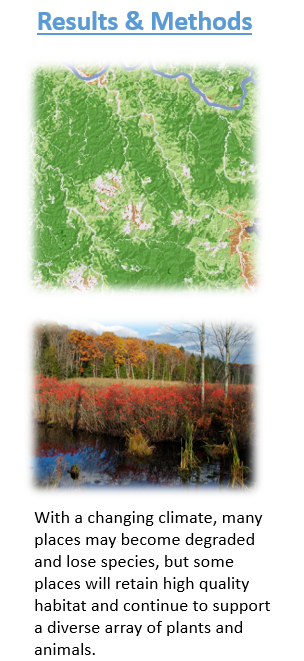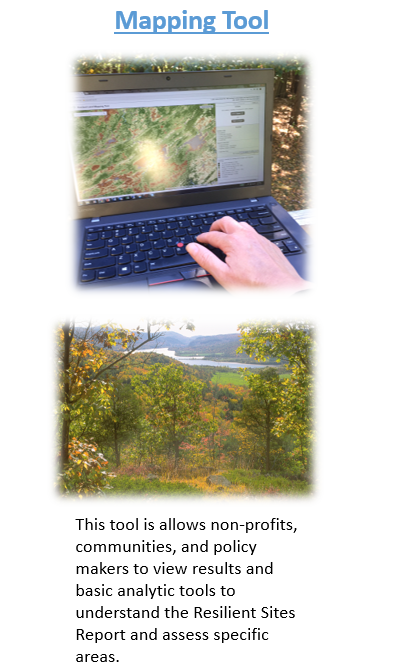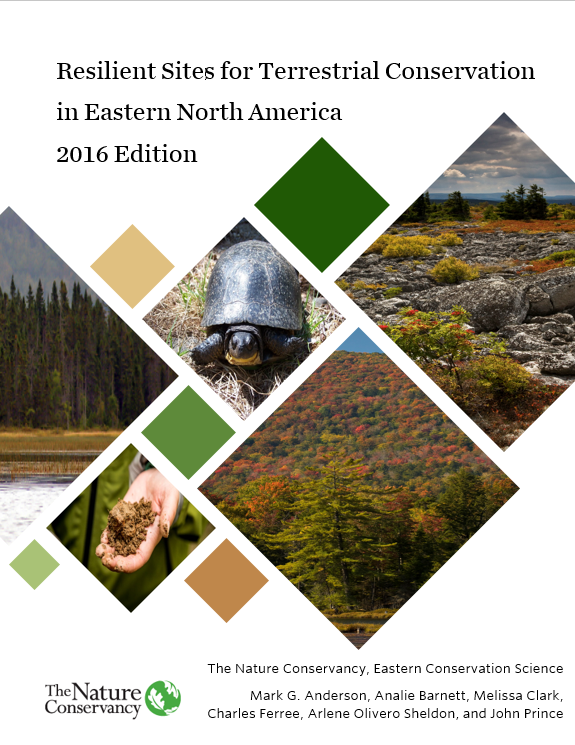The Nature Conservancy’s Resilient Sites for Terrestrial Conservation project identifies the areas estimated to be the most climate resilient for each of 62 characteristic environments in Eastern North America. This new version, released in October 2016, builds on and replaces two previously released studies for the Northeast and Southeast regions. The study developed new methods for mapping species-relevant microclimates and highly connected lands in order to identify places where species are most likely to persist. A committee of 58 scientists from around the region reviewed and guided the project. Explore the results below, download the data, read the report, or peruse background papers. This project was supported by a grant from the Doris Duke Charitable Foundation.


| Latest Report |
 | Resilient Sites for Terrestrial Conservation in Eastern North America 2016 Edition This report updates the resilience analysis for the eastern North America with improved and unified methods. Sites are identified across all geophysical settings that have land characteristics (landscape diversity and local connectedness) that increase resilience to climate change. |
| Download report | Download basic data |
| For additional data products contact us here. |

